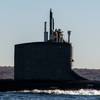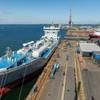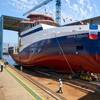CSIRO will be releasing a fleet of floating bio-robots between Christmas Island and Madagascar next week to measure biological indicators in the Indian Ocean including dissolved oxygen, nitrate, organic matter and particles.
A bio-robot is a robot which can measure properties relevant to biology like organic matter. Four bio-robots, each worth up to $100,000, are being dropped into masses of spinning water.
It will be the first time CSIRO has used the new BioArgo robotic floats to measure this massively under-sampled part of the world.
"These can tell us about the growth of plankton, how much carbon they take up, how much gets used up the food chain and how much gets buried," CSIRO project leader Dr Nick Hardman-Mountford said.
"Knowing about this growth is important for predicting how much food the Indian Ocean can produce and how much carbon dioxide it can capture, and will give us a better idea of what keeps the Indian ocean healthy and productive,” he said in a statement.
The robotic float will operate at a depth of 2000 metres and drift with the current. The robots will return to the surface to transmit data via satellites back to the researchers in real time.
"We'll compare the BioArgo measurements with observations from satellites to build up a three dimensional picture of the Indian Ocean’s depth’s,” said Hardman-Mountford.
He added that the East Indian Ocean brings in catches of seven million tons of fish per year.
The voyage is part of a UN Food and Agriculture Organization (UNFAO) voyage on the Norwegian research vessel Dr Fridtjof Nansen, with the project funded by the Department of Industry's Australia-India Strategic Research Fund, CSIRO Oceans & Atmosphere Flagship and Earth Observation Informatics Future Science Platform, the Indian Government's Department of Science and Technology, and UN FAO.










